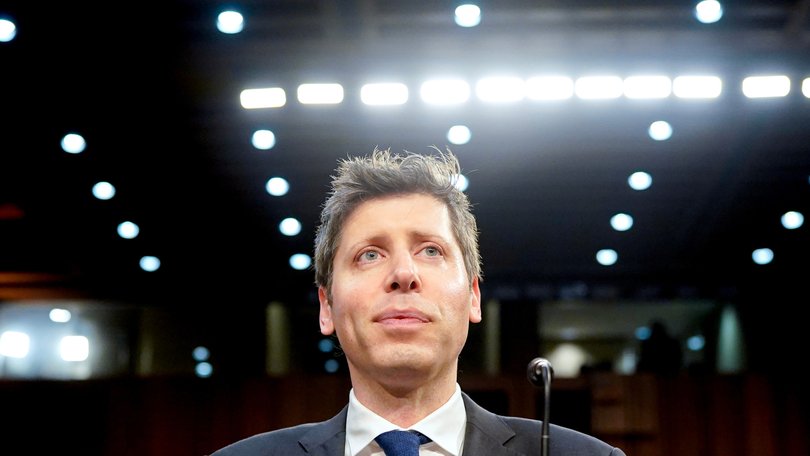THE ECONOMIST: OpenAI’s Sam ALtman is a visionary with a trustworthiness problem

In Greek myth Prometheus stole fire from the gods and brought it to Earth. He paid for that by being bound for eternity to a rock face, where an eagle tormented him daily by pecking at his liver. Such was the price of humanity’s first great technology.
In the 21st century the story of Sam Altman, the co-founder and boss of OpenAI, has a Promethean ring to it, too. He spearheaded the creation of ChatGPT, which was launched in late 2022, stunning the world: suddenly the revolutionary capabilities and risks of generative artificial intelligence (AI) were unleashed. A year later the capricious gods — that is to say, OpenAI’s non-profit board — sought to banish him. Unlike Prometheus, though, Mr Altman emerged unscathed.
This story is the subject of two excellent new books. They explore the murky mix of missionary zeal, rivalry and mistrust at OpenAI in the run-up to the birth of ChatGPT. The tensions are even more apparent in the chaos leading up to the attempt to fire Mr Altman during the abortive boardroom coup in November 2023.
Sign up to The Nightly's newsletters.
Get the first look at the digital newspaper, curated daily stories and breaking headlines delivered to your inbox.
By continuing you agree to our Terms and Privacy Policy.It is a testimony to the skill of the authors, who are journalists, that they have produced deeply researched, gripping accounts, both published on May 20, almost exactly a year and a half after that event. Better still, they tell the story in different ways.
Keach Hagey’s The Optimist is what could be called the authorised version. She had access to Mr Altman and many of the main characters in his story, including his family and friends. His personality is vivid and complicated enough that her story never flags. It is no hagiography.
Karen Hao got no such access for Empire of AI. OpenAI kept her at arm’s length, which gives her account more bite. Both books reveal disturbing traits about Mr Altman, OpenAI and the culture of Silicon Valley that are useful to bear in mind amid the hype about generative AI.
Mr Altman is a beguiling character. As Ms Hagey says, the first things you notice about him are his slight stature and the intensity of his gaze, “as though he is speaking to the most important person in the world”. Brought up in the American Midwest, from a young age he was a technology whiz who was surprisingly witty. He proved a natural crusader: at 17 he shocked a school assembly by revealing his homosexuality in order to promote gay rights.
Throughout his career, he has combined an ambition to create world-changing technologies with a gift for storytelling that helps him raise large sums of money to fund his dreams. He started with a location-tracking phone app called Loopt. Since then, his large bets have included a cryptocurrency backed by eye scans to certify digital identity in a world of AI; life extension through cellular-rejuvenation technology; nuclear fusion; and, of course, the quest for superintelligence.
Some liken his abilities to Steve Jobs’s “reality distortion field” — the Apple co-founder could make people believe in what they thought was impossible. But unlike Jobs, who was often abrasive, Mr Altman is a sensitive listener who knows how to frame what he offers in ways that people find alluring.
From early on, his people skills have attracted powerful mentors. Paul Graham, co-founder of Y Combinator (YC), a startup incubator, said of Mr Altman: “You could parachute him into an island full of cannibals and come back in five years and he’d be king.” Indeed Mr Graham and his partner, Jessica Livingston, handed the reins of YC to Mr Altman within a few years, elevating him at the age of 28 to a position of near-unrivalled power in the Silicon Valley startup scene.
Even then, there were misgivings about his candour. “If Sam smiles, it’s super deliberate,” a former YC founder tells Ms Hao. “Sam has smiled uncontrollably only once, when (Mr Graham) told him to take over YC.”
At Loopt, which he sold for $US43 million ($67m) in 2012, his colleagues twice sought to convince the board to sack him as CEO because, as Ms Hagey says, he pursued his own ideas without informing them. Their concerns about his trustworthiness are recounted in both books — even if, in the end, his financial backers remained loyal.
Likewise, at YC, Mr Graham and Ms Livingston grew frustrated with Mr Altman’s moonlighting at OpenAI, which he started with Elon Musk and others in 2015, while still running YC. Ms Livingston fired him, but as Ms Hagey recounts, he left chaos in his wake.
Not only was he overseen by a non-functioning board, he had also used YC equity to help lure people to OpenAI. She says some YC partners saw a potential conflict of interest, “or at least an unseemly leveraging of the YC brand for Altman’s personal projects”.
These details are important. Both accounts suggest that his ambition, speed and silver-tongued way of telling people only what they want to hear have come close to unravelling OpenAI. Paradoxically, some of these same traits helped OpenAI amass the huge amounts of money and computational power, not to mention the troves of data scraped from the internet to feed its models, that helped give the firm the lead in generative AI.
On one occasion, known as “the divorce”, he so alienated some of OpenAI’s researchers focused on safety that they left the company and founded one of its main rivals, Anthropic, in 2021.
On another, known as “the blip”, he was sensationally fired after his top lieutenants and the board lost trust in him because, as both books say, he told them conflicting stories and failed to give them straight answers about his and OpenAI’s investment activities. Yet he returned triumphantly a few days later when they realised that the company might collapse without him.
Underpinning both these episodes, and running through both books, is the ideological struggle between those who favour speed over safety when rolling out generative AI. OpenAI has suffered heavily from an internecine rift between “doomers” and “boomers”.
Many of the “doomers” are part of the effective-altruism (EA) movement, a philanthropic philosophy aimed at finding the most potent way to help others, which took a keen interest in the possibly catastrophic risks of AI.
The “boomers”, or “effective accelerationists”, are more concerned that if America does not win the AI race, China will. In reality, as Ms Hao points out, they are two sides of the same coin. Each is striving to push the boundaries of machine superintelligence as far as is safe or possible—even if one warns of “fire and brimstone” and the other offers “visions of heaven”.
Equally interesting are the rivalries in a field full of quasi-geniuses and the technological leaps they perform to keep ahead of each other. Both books chronicle the falling-out between Mr Musk and Mr Altman, which is vividly catalogued as part of a lawsuit Mr Musk has filed against OpenAI, its boss, and Microsoft, the biggest investor in OpenAI’s for-profit entity.
Throughout, the two books diverge in ways that underscore the question at the heart of their common story: does the end, the quest for superintelligent AI, justify the means?
Ms Hagey appears to think so. She explains away some of Mr Altman’s behaviour as aversion to conflict and a “move fast and break things” mindset common in Silicon Valley.
Playing with fire
Ms Hao, meanwhile, accuses OpenAI of betraying its mission. She is critical not only of Mr Altman, but of the heads of rival firms, who she says are in the same power struggle.
She says generative-AI models are “monstrosities”, consuming too much data, power and natural resources. She goes too far, however, in likening OpenAi and other labs to colonial empires.
But taking the evidence from both books, her concerns about Mr Altman seem valid. In any organisation a CEO who does not seem fully trustworthy is a problem.
It is particularly so at the helm of a firm like OpenAI, which is building potentially Promethean technologies.
